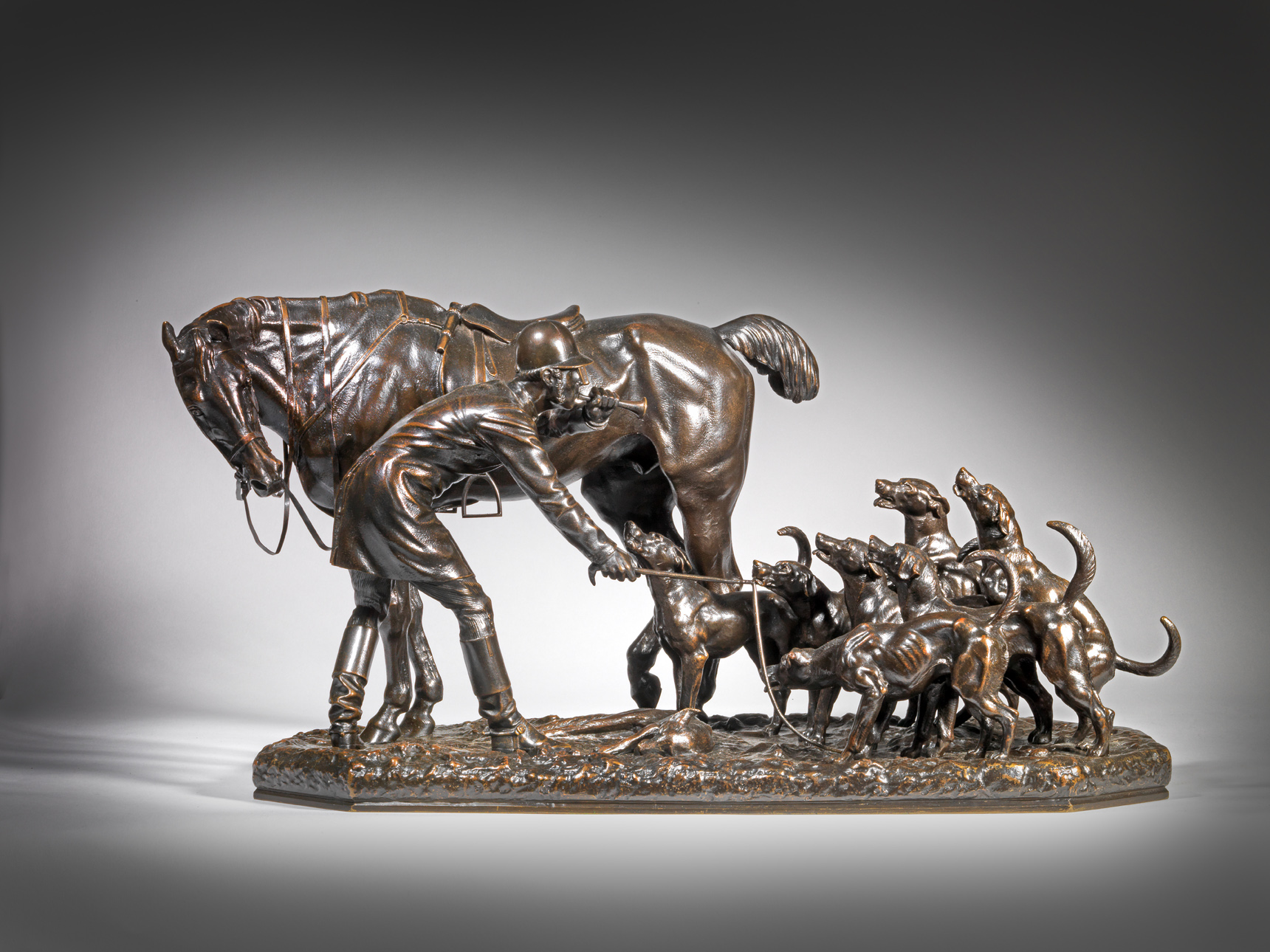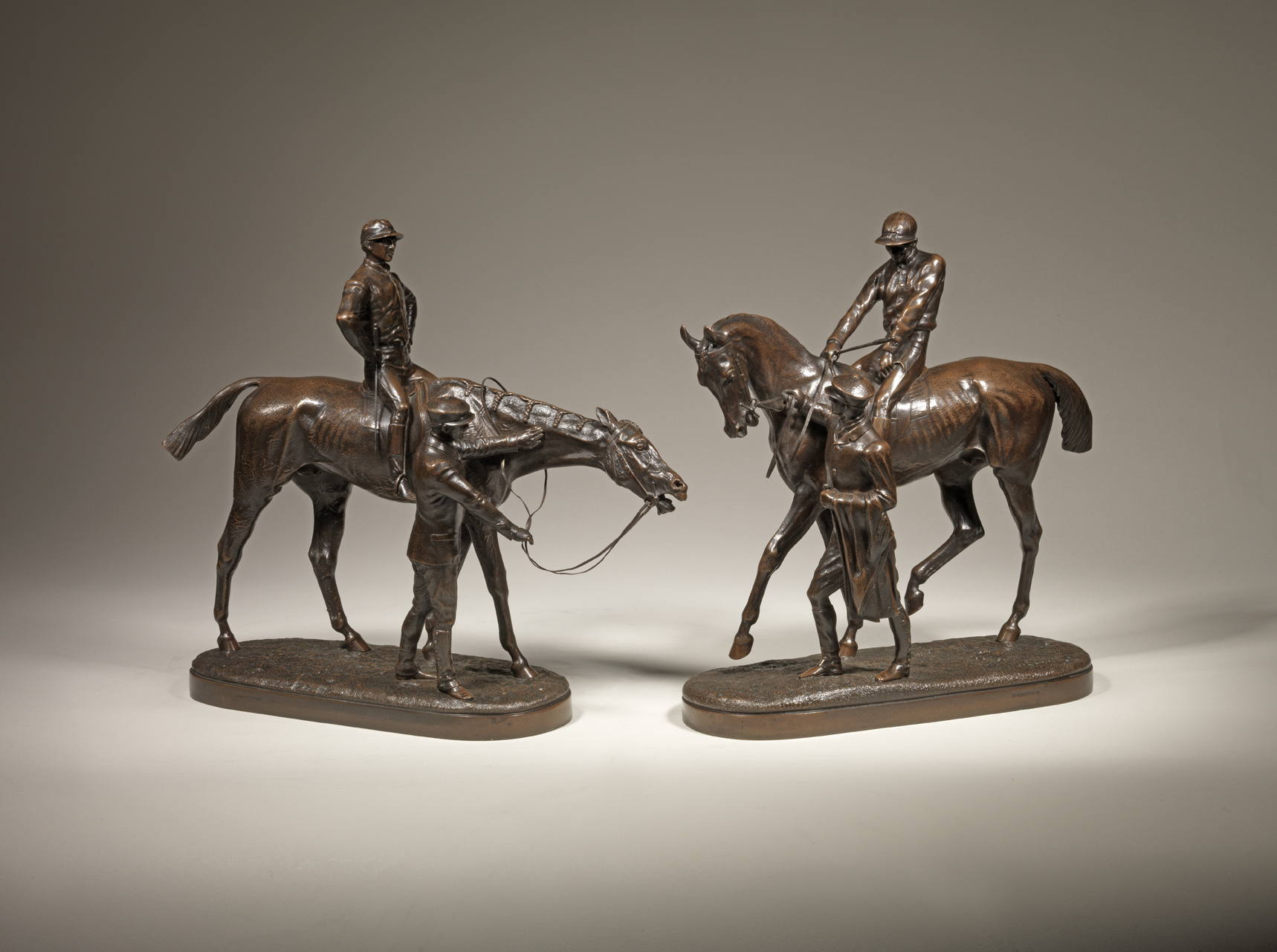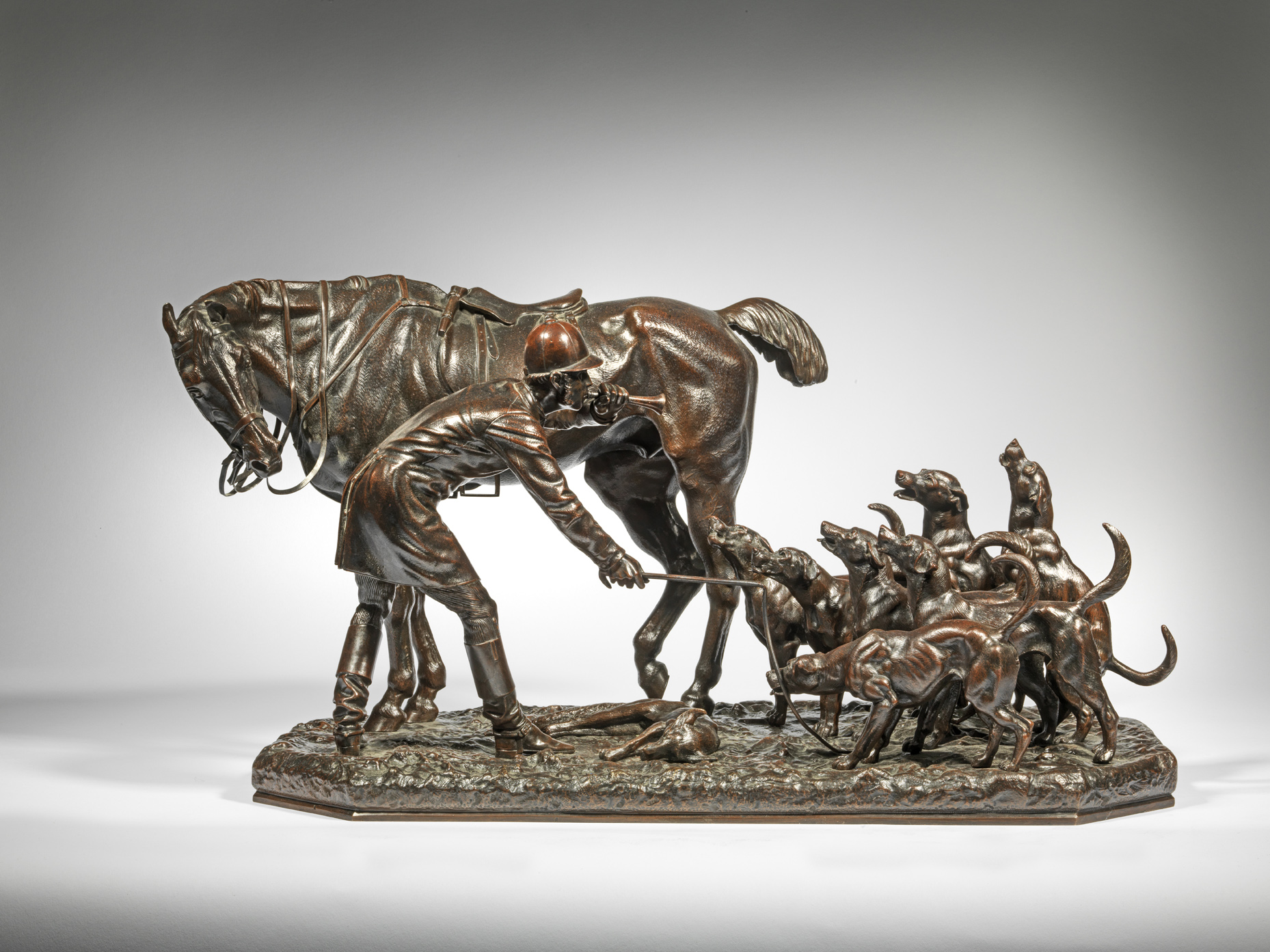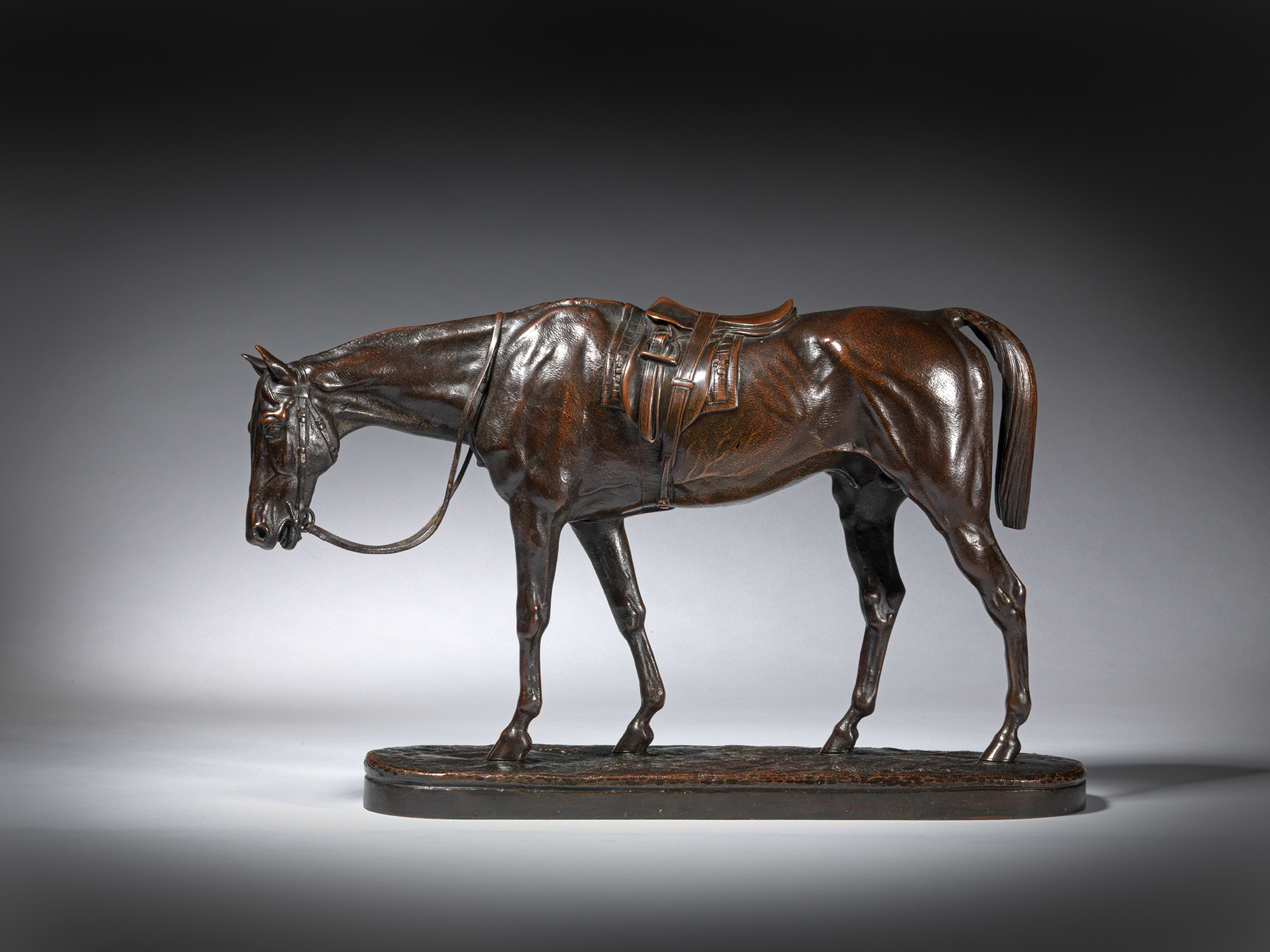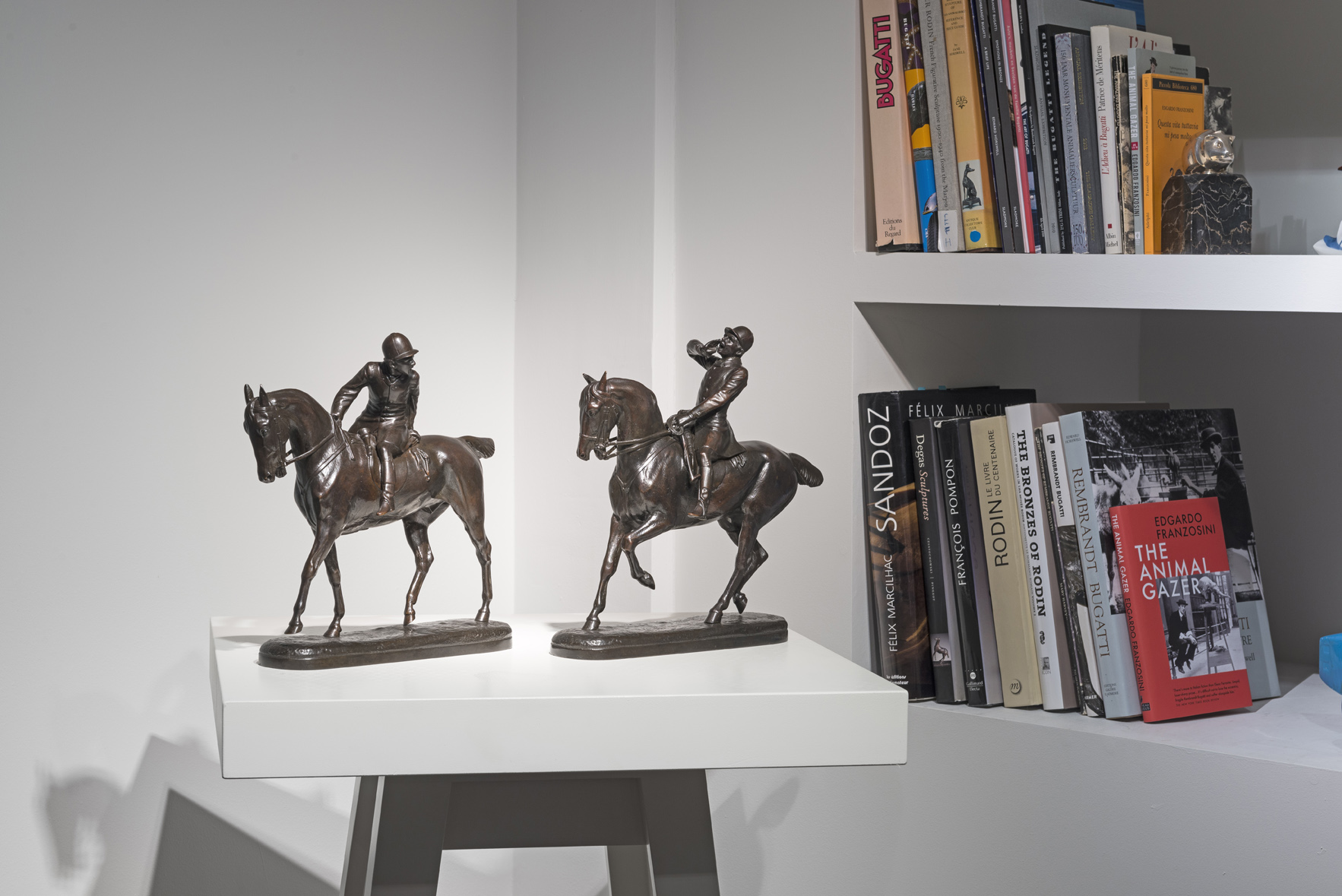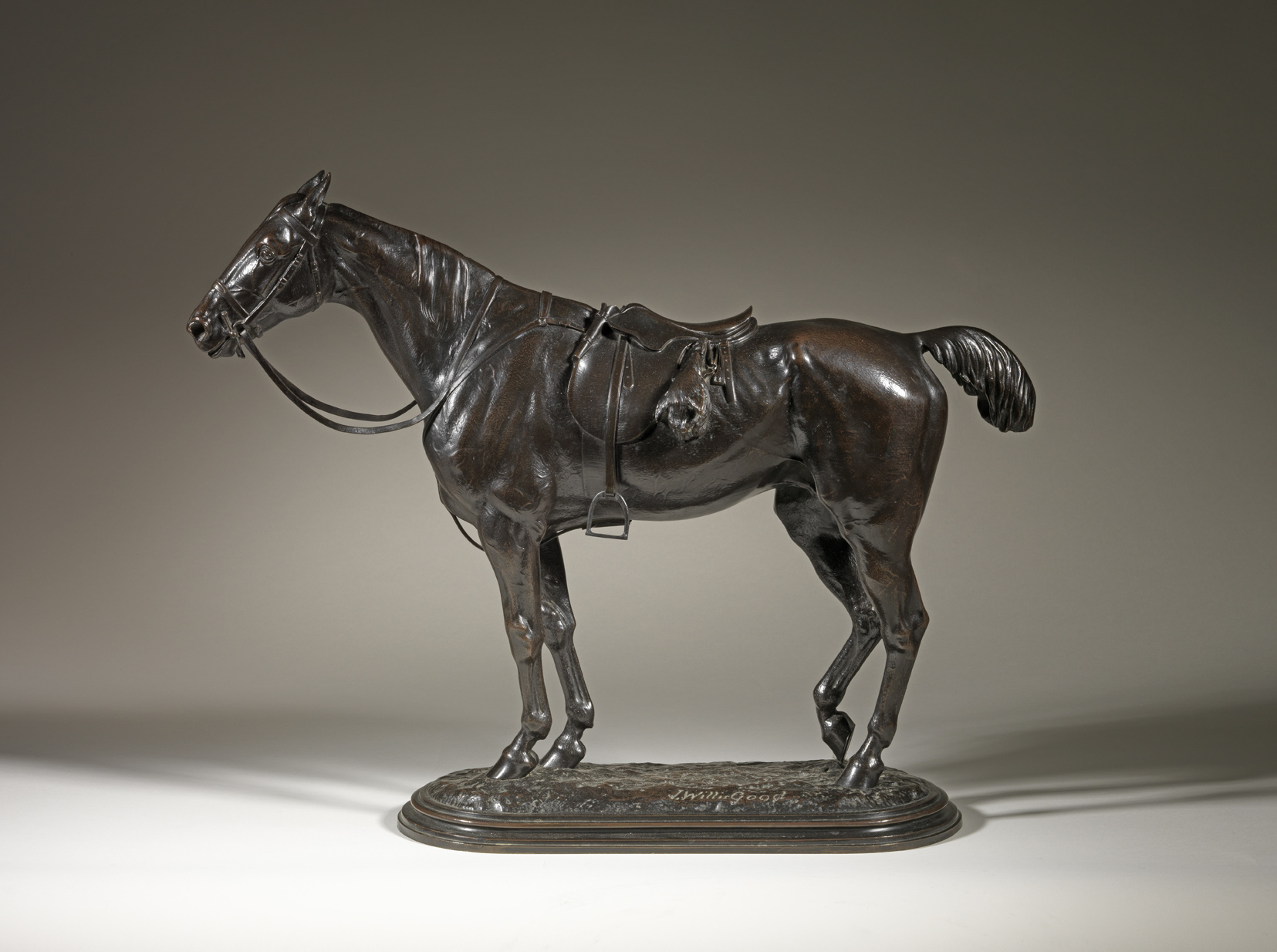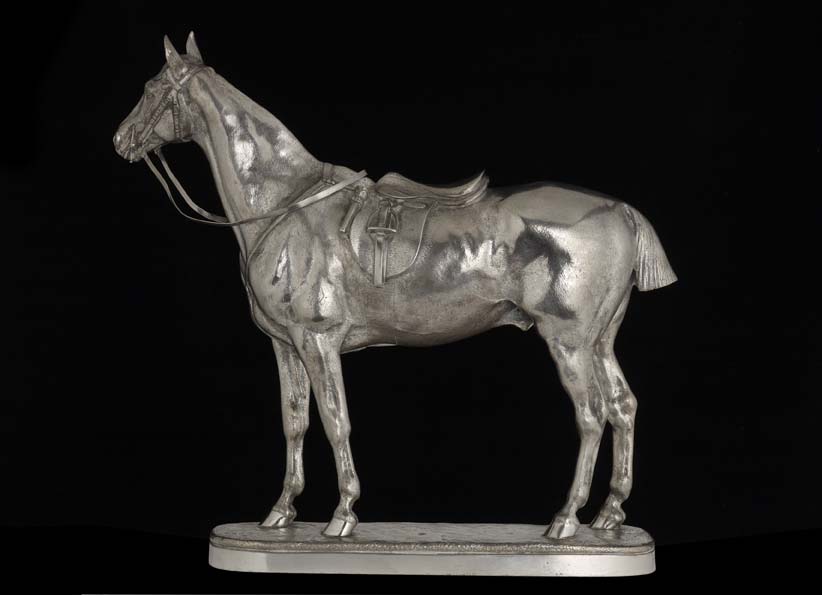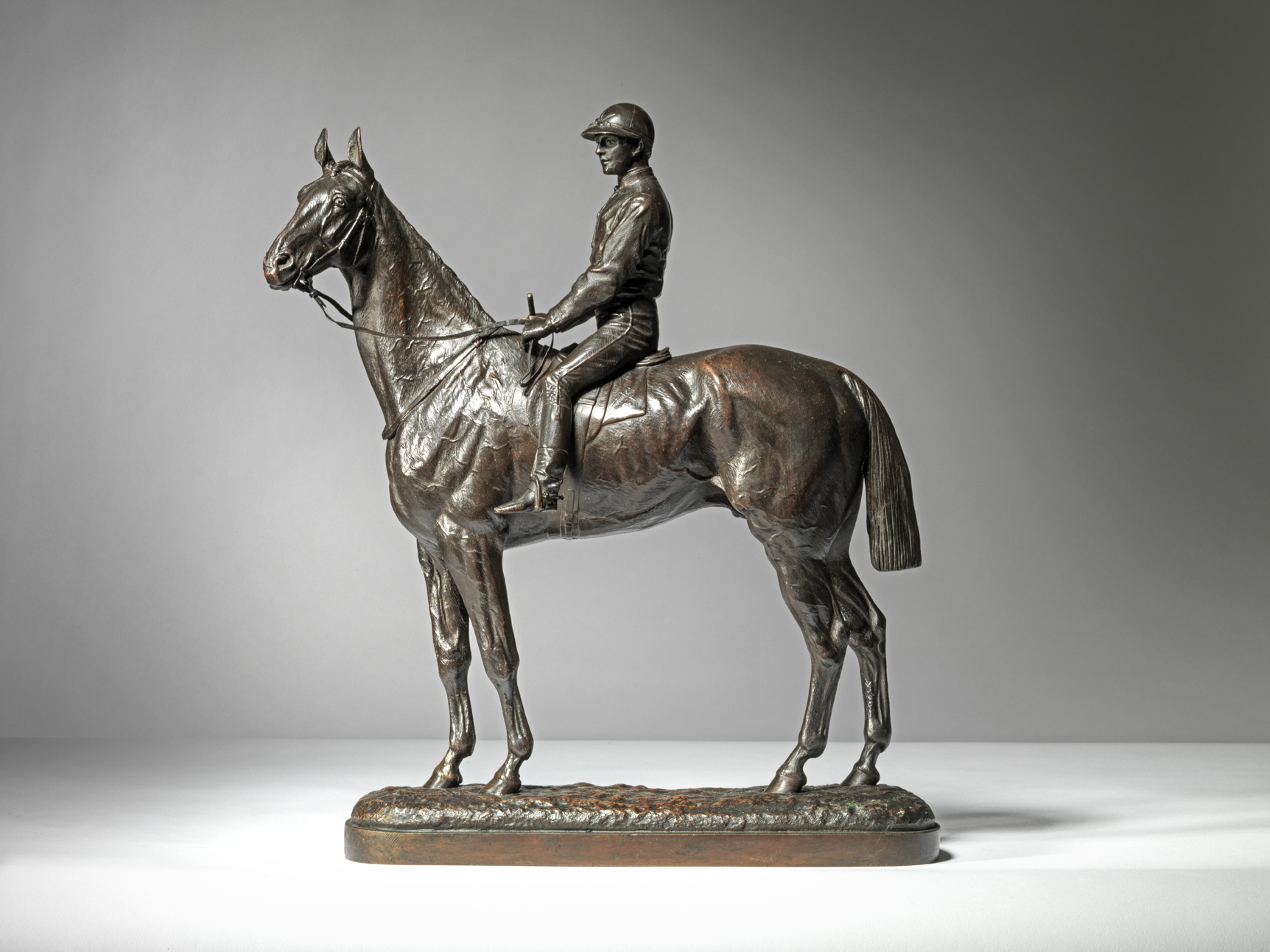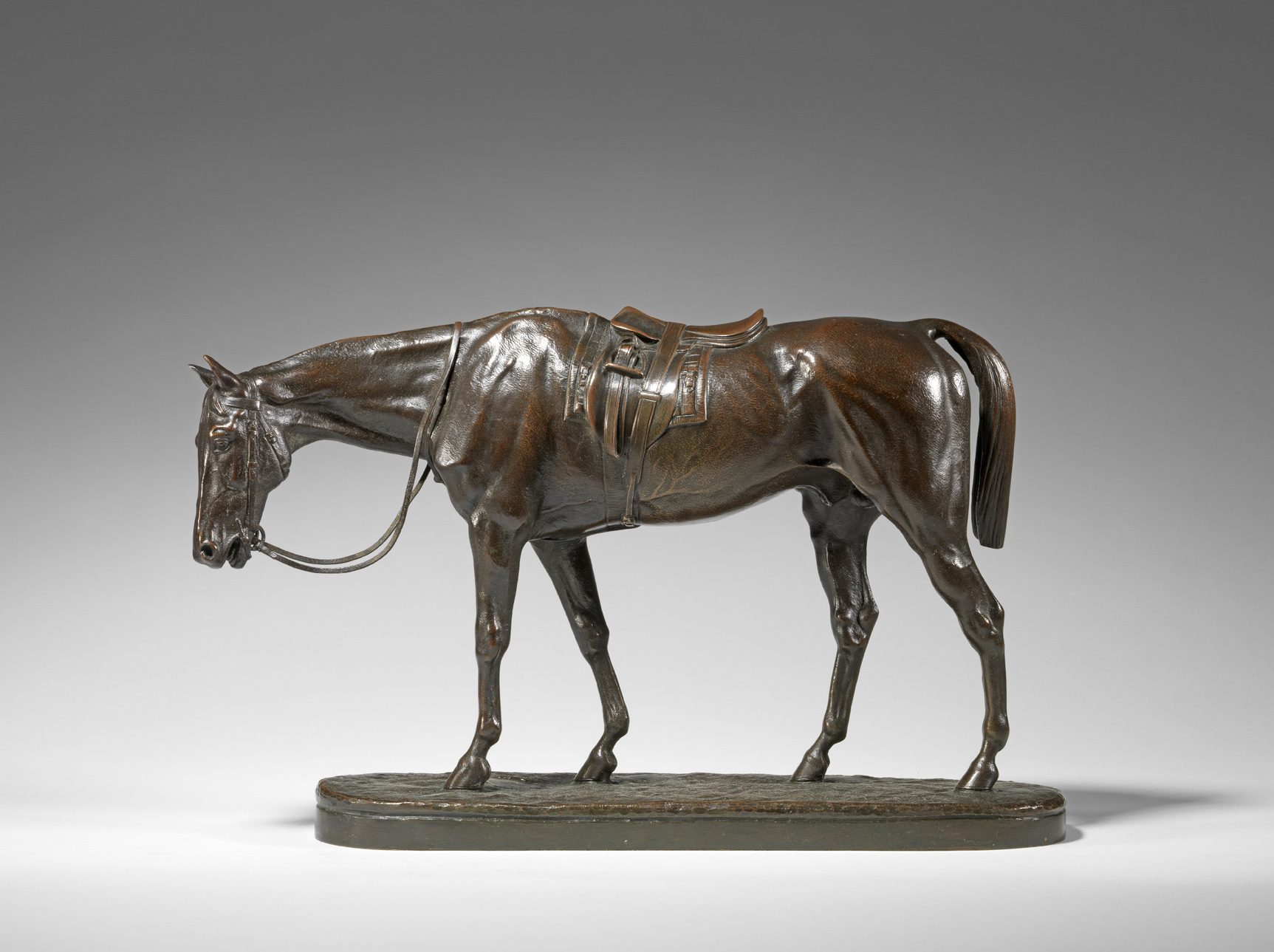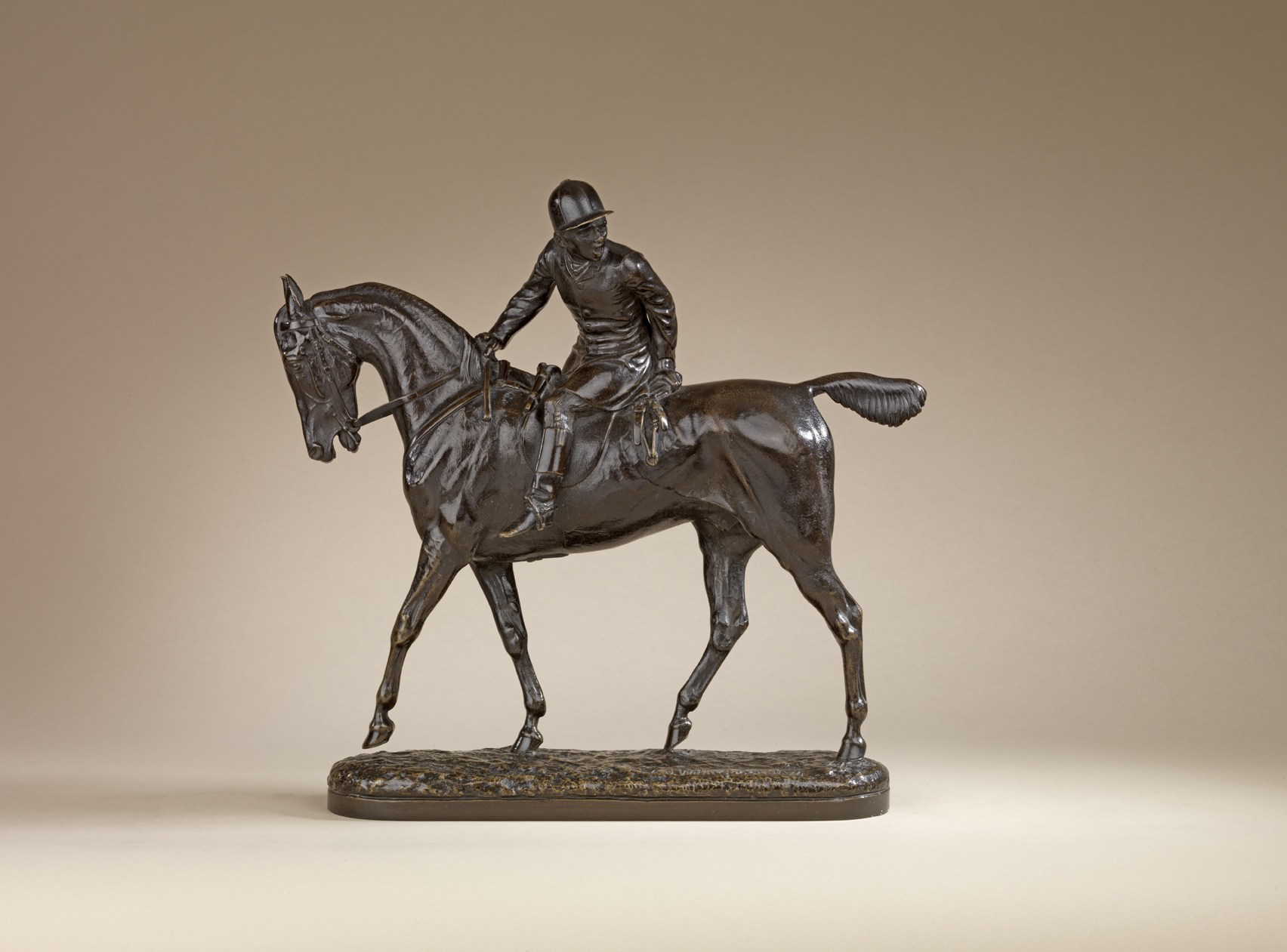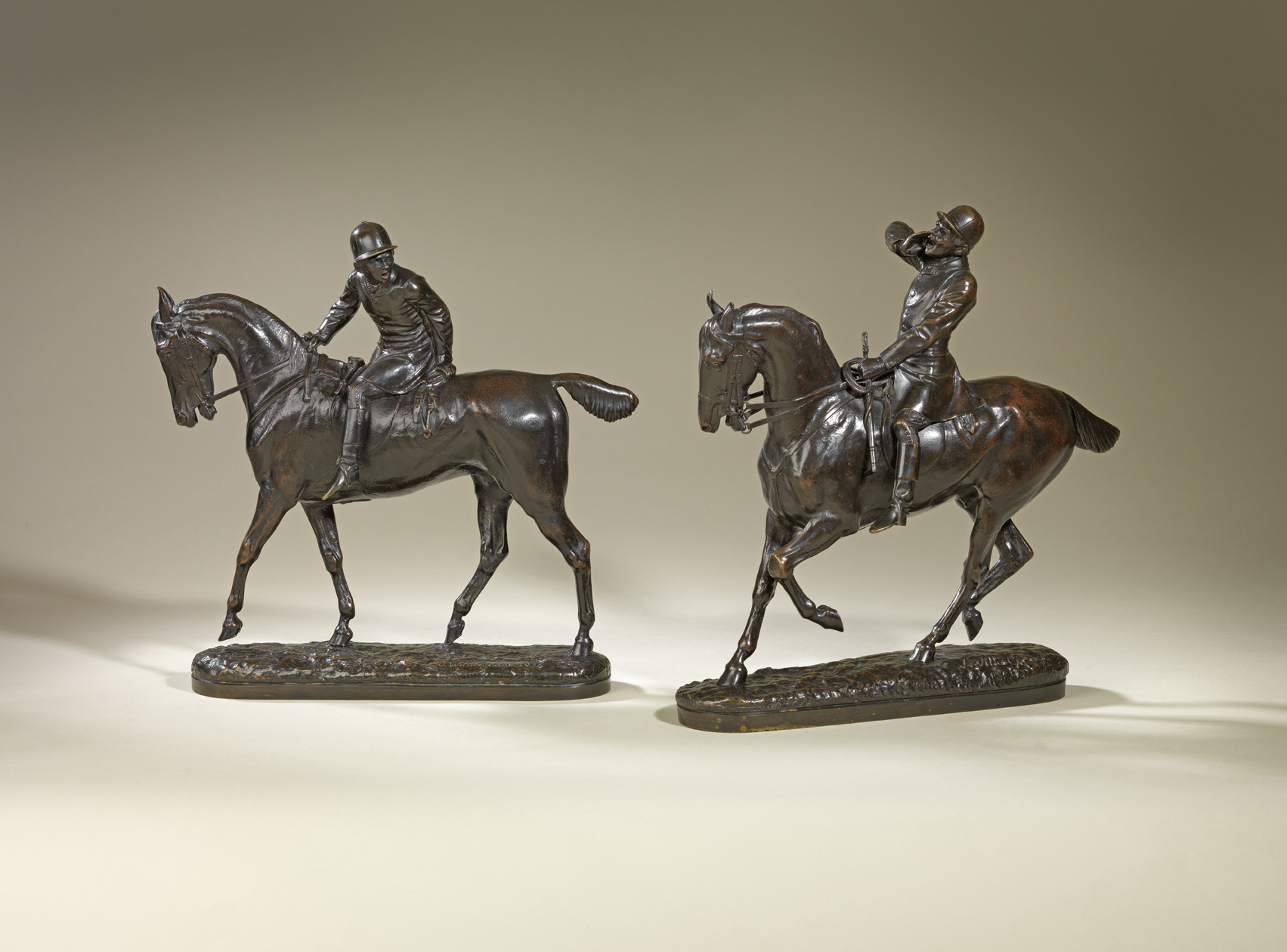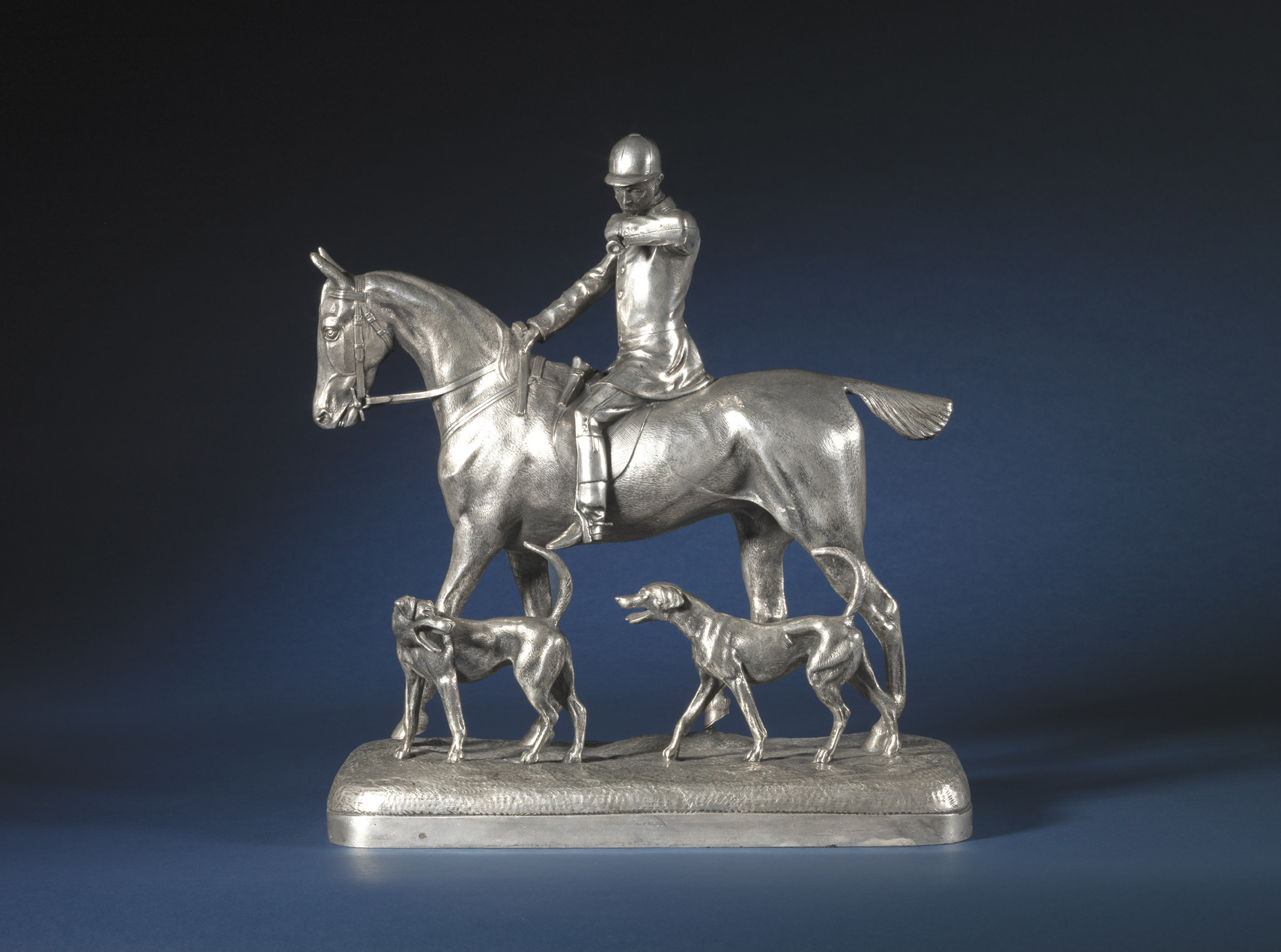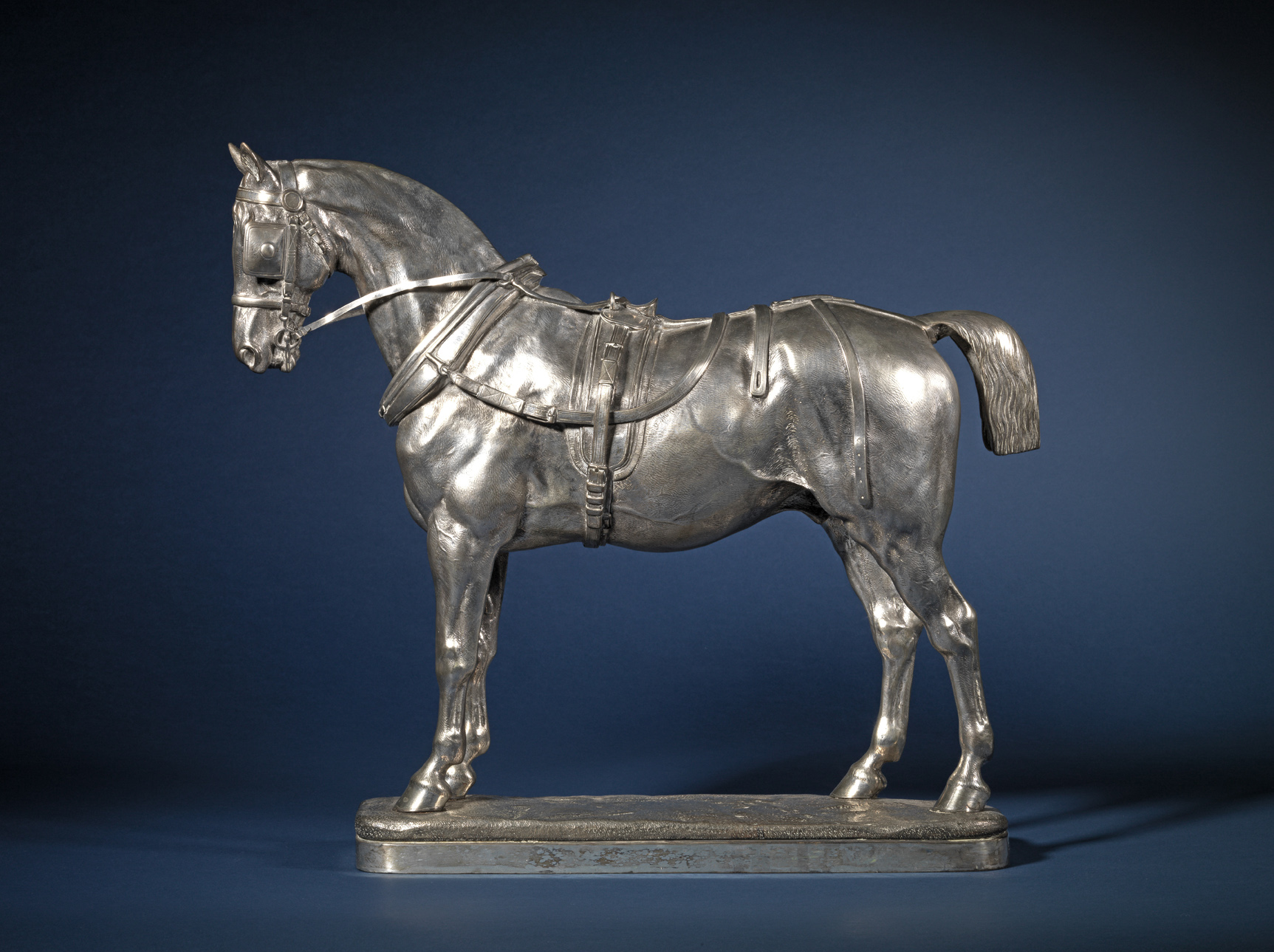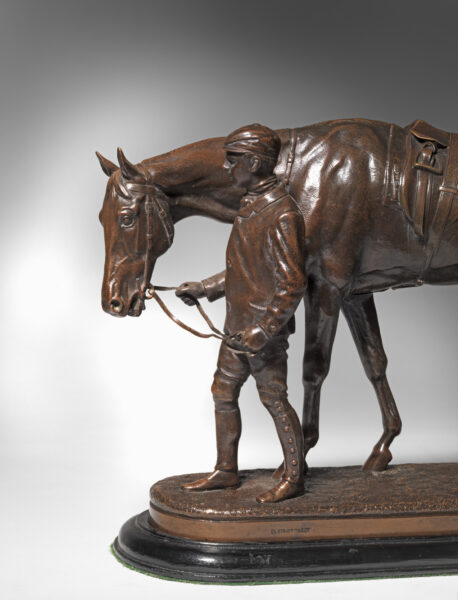Willis Good’s sculptures were justifiably popular during his lifetime and reproduced in bronze, sterling silver and silver-plated bronze, often by Elkington & Co., of Birmingham, a company founded in the 1840’s who were pioneers in the field of electroplate, electrotyping, and Sheffield Silver. At the Great Exhibition of 1851 they exhibited under the name ‘Elkington and Mason’.
Willis-Good, the only English counterpart to the French ‘Animalier’ sculptors, produced only ten to fifteen models in his short and tragic life. A pupil of Boehm who was Queen Victoria’s favourite sculptor, Willis Good’s sculptures excel in their ability to capture not just the sport but also the quintessential English quality of the sporting life.
He made his Royal Academy début in 1870, and over the following decade showed a series of equestrian pieces in bronze and terracotta. His works display staggering accomplishment, skill, and naturalism. Certainly, his empathy with animals shows him familiar with the hunting and racing world, and it is possible that he himself was a horseman.
John Willis Good is the leading English Animalier sculptor of the nineteenth century, whose work is comparable with the French Animalier masters of this period. During his short, but prolific career he concentrated on studies of hunting scenes, namely hounds and horses, with or without riders
Sadly, at the age of 34, after only ten years exhibiting his work, he shot himself in his studio on the Fulham Road, London. Perhaps for this reason we know very little about him today other than he took a probationary course in the schools of the Royal Academy and later studied under the celebrated sculptor J. E. Boehm. Between 1870 and 1878 he exhibited sixteen pieces at the Royal Academy and on one occasion collaborated on a work with Charles Lutyens, himself a well-known sporting painter who also produced several sculptures.
Willis Good’s sculptures were justifiably popular during his lifetime and were edited in bronze, sterling silver and silver-plated bronze, often by Elkington & Co. of Birmingham. His last work was a series of studies of hounds, and he became increasingly interested in the patination of his work which he began to carry out himself.


